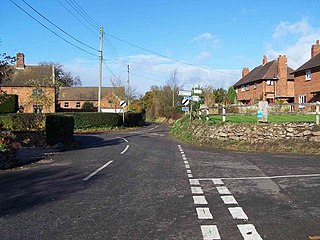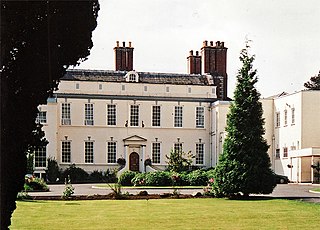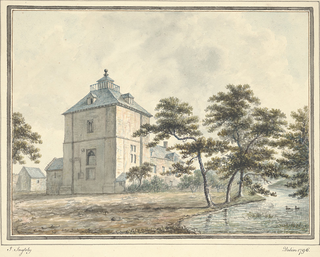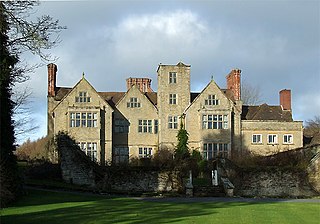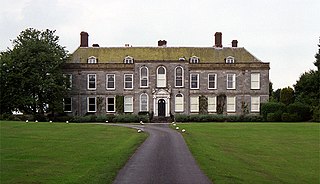
Acton Reynald Hall is a 19th-century country house at Acton Reynald, Moreton Corbet, Shropshire, England. It is a Grade II* listed building. [1]

Acton Reynald is a village in the north of Shropshire, England. The village is perhaps more of a hamlet in that it does not contain a public house, Post Office, or any other features typically associated with villages. It is in close proximity to the A49 which runs from Ross-on-Wye on the Welsh border to Bamber Bridge in Lancashire. The village backs on to RAF Shawbury and the village of Moreton Corbet to its east.

Moreton Corbet is a village in the civil parish of Moreton Corbet and Lee Brockhurst in Shropshire, England. The village's toponym refers to the Corbet baronets, the local landowners.

Shropshire is a county in England, bordering Wales to the west, Cheshire to the north, Staffordshire to the east, and Worcestershire and Herefordshire to the south. Shropshire Council was created in 2009, a unitary authority taking over from the previous county council and five district councils. The borough of Telford and Wrekin has been a separate unitary authority since 1998 but continues to be included in the ceremonial county.
The Corbet family abandoned nearby Moreton Corbet Castle as a residence in about 1800 after their 17th-century hall had been enlarged and improved for their occupation. Sir Andrew Corbet retained architect John Hiram Haycock (1759–1830), who created the new mansion in a Neo-Jacobean style. [1] The seven-bayed, three-storey eastern entrance front retains three bays and a Tuscan portico dating from 1610 and 1625. [2] The main block, dating from about 1800, was later extended by service wings in about 1840 and other improvements in 1893. [1]

There have been six baronetcies created for members of the Corbet family, four in the Baronetage of England, one in the Baronetage of Great Britain and one in the Baronetage of the United Kingdom. All creations are extinct. The recipients were descendants of the ancient Norman family of Corbet which held substantial estates in Shropshire including Wattlesborough, Caus Castle, Moreton Corbet Castle and Acton Reynald Hall.

Moreton Corbet Castle is an English Heritage property located near the village of Moreton Corbet, Shropshire, England, 8 miles northeast of Shrewsbury. It is a Grade I listed building. The ruins are from two different eras: a medieval stronghold and an Elizabethan era manor house. The buildings have been out of use since the 18th century.
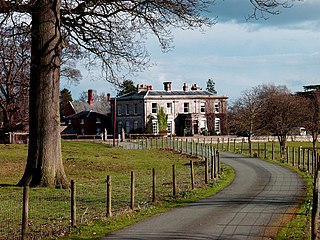
John Hiram Haycock (1759-1830) was an architect who built many notable buildings in Shropshire and Montgomeryshire. He was the son of William Haycock (1725-1802), a carpenter and joiner of Shrewsbury. J H Haycock was apprenticed to his father and became a freeman of the Shrewsbury Carpenters’ and Bricklayers’ Company in 1796. From about 1814 John Hiram Haycock worked in partnership with his son Edward Haycock, Sr. In 1824 he became the Shropshire County Surveyor.
The whole of the village of Acton Reynald together with several farms was demolished in the 1840s to facilitate the creation of the park.
From about 1919 until 1995 the house was occupied by a girls' school. It is now once again a private residence.



